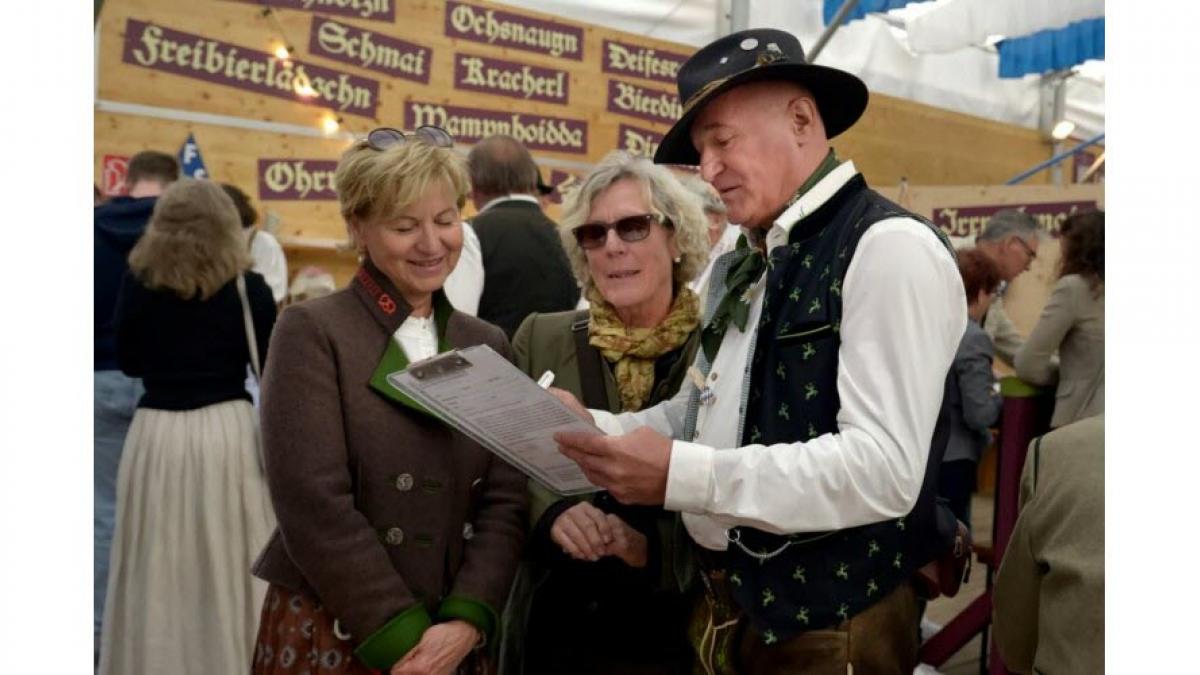The Surprising Origins of Parang, Trinidad and Tobago’s Christmas Folk Music
Smithonian Institution for Folklife

The raucous sound of a cuatro and maracas spills from a variety store in Arima, a borough in eastern Trinidad. A woman in a long wrap skirt stands nearby, hips swaying in time. Behind her, whistling along, a street vendor measures out bags of the bright red sorrel that will flavor his customers’ Christmas drinks. A red-striped minibus, one of our “maxi-taxis,” stops at the curb, and as the doors open, passengers nod their heads, tap their feet. The driver’s arm, hanging out the window, slaps out the beat against the warm metallic frame. Rhythm is in our blood and bones.
This present cacophony is a mix of woody percussion and strings. The song is “Cantando Glória,” one of many that reference the birth of Jesus Christ. Few Trinidadians would understand the Spanish words, as our official language is English. Yet, in Trinidad and Tobago, this traditional folk music, parang, has come to represent our Christmas.
Parang has a history that dates from the late eighteenth century when cocoa farmers from nearby Venezuela were brought over to develop plantations in Trinidad and Tobago (or T&T, as we call it). These Spanish-speaking farmers settled in communities like Lopinot, Arima, Santa Cruz, and Moruga. They were called cocoa Españols, which eventually became cocoa panyols. They carried over one of Venezuela’s cultural traditions, the parranda navideña. During the Christmas season—October into January—groups of singers, known as parranderos, visited the homes of friends and family to share aguinaldos, or “gifts” of Christmas songs.
Parranderos, then and now, performed a range of music accompanied by Venezuelan instruments like the cuatro, maracas, and guiro. They would sing a serenal to announce their arrival, followed by aguinaldos like “Ave O Maria” and “Cantando Glória,” before saying their goodbyes with despedidas.
In 1797, the Spanish governor surrendered Trinidad to British invaders, and over the next few generations, the Spanish language faded from use. However, these songs helped the descendants of the cocoa panyols retain their cultural traditions. During their house-to-house serenades, parranderos began including secular songs like “Rio Manzanares” (a song about the Manzanares river in Venezuela) and “Angelo” (about young lovers). Eventually, the music of the parranda navideña became the musical genre known as parang.
In this fascinating diary entry, parrandero Lordrick Espinosa describes how he first experienced parang: “About 9 P.M Maria told me we are going to make house parang. We travelled through a cocoa field, a short distance from a house there was a call for silence, the flashlight was switched off and the flambeaux was blown out… We walked silently to the door and started the parang. The house was filled with lights, the door opened and we went inside…”
Espinosa claims that a 1964 newspaper article describing parang as an “old custom” fading away prompted him and another parrandero, Paul Castillo, to approach Leo De Leon, program manager of radio station AM 610. They agreed it was important to start a campaign promoting the music.
Now, more than fifty years later, parang remains the preferred musical choice for Trinidadians as they celebrate Christmas. It may prove that, in our tropical climate, Christmas songs about sledding, reindeer, and snow are even more incomprehensible than songs in a language barely understood. Today, secondary schools in Trinidad and Tobago teach Spanish as a second language, and September has been named National Parang History Month by the National Parang Association, headquartered in Arima.
Within the past five years, our islands have become refuge to approximately 50,000 Venezuelans who crossed the water to flee civil unrest. While they are not welcomed by everyone, it is clear that Venezuelan traditions have long been part of Trinidad’s cultural tapestry.
The genre has also given birth to new rhythms. Parang soca or soca parang permeates the airwaves, using the rhythmic style of Trinidad’s traditional music, calypso, together with parang instruments and English lyrics to appeal to a wider audience. “Chutney parang,” sung in Bhojpuri and English, pays tribute to those of Indian heritage, nearly half of the islands’ population. Escaping the confines of the Christmas season, parang is now heard at Easter celebrations, weddings, and other heritage festivals.

Today, parang bands abound, and most parranderos consider their involvement in parang a family tradition. Four members of the parang band Los Ruisenores credits parang with playing a prominent role in their formative years. Roxanne and Peter Figueroa, husband and wife, recall being young children entranced by house-to-house parang. Their fathers and uncles, all parranderos, taught them how to strum the instruments and tease out notes that danced in the air. Band member Jolene Salandy Ashby tells a similar story of familial traditions. Her grandfather was a member of La Divina Pastora, a renowned parang band led by Daisy Voisin, dubbed the “Parang Queen.” One of the newer members, Elthon Julien, simply followed his heart, joining his school’s parang group before finding himself in one of the best parang bands in southern Trinidad. These parranderos consider parang as not just a musical genre but, as the band says, “part of our cultural heritage… part of our identity.”
Ethnomusicologist Francisca Allard’s early Christmas memories are entwined with parang. Her uncle, Sylvestre Mata, migrated to Trinidad from Venezuela in 1916. Mata led the Ready Mix Parang Group to victory in the first-ever National Parang Competition as their lead singer. In 1972, he was recognized as a cultural icon and awarded a Public Service Silver Medal of Merit for his musical contributions. Allard, a retired Spanish-language teacher and member of the parang band Los Dinamicos, learned how to sing and play parang in response to the excitement Mata’s musical visits invoked. She believes that there is a “sensory appreciation without full understanding” of the lyrics in parang and that parang appeals to everyone, despite its foreign origins, because its essence is “goodwill, sharing, and community.”


Composer, music teacher, and parang aficionado George Carter uses parang to teach Spanish to younger generations. During a visit to his relatives in the Spanish-speaking town of Lopinot as a young boy, Carter witnessed house-to-house parang. By age seventeen, he had learned to play cuatro and guitar. When he became an agriculture teacher in his early twenties, Carter started tutoring musicians as well. From 1975, he began working in Junior Parang Competitions and the national cultural festival, Best Village, helping competitors refine their pronunciation and understand the Spanish lyrics. Now, his children are also parranderos. It is a fitting representation of his belief that “culture is not preserved in a museum—it is preserved through people.”
Twenty-two years ago, Irvys Juarez moved to Trinidad from Venezuela and promptly joined a parang band. Juarez was lead singer for Fuego Caribeño for twelve years, composing and co-producing their debut album, Mi Anuncio. In 2017, he launched his solo career as a musician under the name Voz Music and became the public relations officer for the National Parang Association in 2020. Having worked his way up from background vocalist to solo artist, he describes parang as a type of music that illustrates love, family, community, and culture.
“What else can we ask for?” he says. “That’s all we need.”
In Trinidad and Tobago, we are no strangers to diversity and integration with nationalities from as far as Africa and as near as Venezuela. A mix of different cultures have been instrumental in the formation of our food, language, music, and celebratory traditions. Our national anthem welcomes diversity with the words “here every creed and race find an equal place.” In differences, we have found common ground. While many do not understand the Spanish lyrics in parang, we have grown to understand the emotions behind them. For Trinidadians, language is not a barrier; it is merely a gateway to another world, one that eventually feels like home.

Avah Atherton is a Trinidadian intern at the Center for Folklife and Cultural Heritage with an interest in food, languages, oral histories, and culture. With a background in journalism, linguistics, and cultural enterprise management, she is focused on documenting traditional culture that offers a deeper perspective on Caribbean history and society. She would like to thank Dr. Francisca Allard for her professional guidance and valuable support on this article.
- Se connecter ou s'inscrire pour publier un commentaire
- 237 vues
Connexion utilisateur
Dans la même rubrique
Mustafa Benfodil ("El Watan.dz")
14/12/2025 - 10:42
Yves Tusseau
04/12/2025 - 11:09
Julien Steinhauser
02/12/2025 - 19:47
Commentaires récents
Didier Laguerre (PPM) lance sa campagne électorale
Albè, je souscris complètement à l’analyse sise...
Frédéric C.
24/12/2025 - 10:29
...derrière votre commentaire. Collectivement, nous sommes encore en plein "colorisme". Lire la suite
Didier Laguerre (PPM) lance sa campagne électorale
ABCX, vous semblez confirmer donc ce que...
Frédéric C.
24/12/2025 - 10:12
...j’avais gardé comme souvenirs de cette campagne, qqch de pas très propre. Lire la suite
Didier Laguerre (PPM) lance sa campagne électorale
RIEN DE NOUVEAU SOUS LE SOLEIL
Albè
24/12/2025 - 09:49
Quand Césaire avait eu le choix entre Lise et Letchimy pour lui succéder à la mairie de FDF, des Lire la suite
Didier Laguerre (PPM) lance sa campagne électorale
gag
abcx
23/12/2025 - 19:02
La honteuse effigie avait été accrochée pendant toute la campagne électorale au 2ème étage d'un i Lire la suite
Didier Laguerre (PPM) lance sa campagne électorale
Wi, Véyative, j’ai entendu ça...
Frédéric C.
23/12/2025 - 16:20
...quelque part! Lire la suite
Top 5 des articles
Aujourd'hui :
- La Guadeloupe et Martinique dans le top 10 mondial des ventes de voitures neuves
- « Man sé an négrès Ibo » : subversion coloniale et affirmation identitaire.
- Ce roman français rocambolesque d’une autrice réunionnaise vient d’être élu parmi les meilleurs livres 2025 du New York Times (c’est une première historique !)
- Patriyot #151 Décembre 2025
- Didier Laguerre (PPM) lance sa campagne électorale
Depuis toujours :
- Tous les présidents et premiers ministres de la Caraïbe sont vaccinés
- L'intolérable appauvrissement intellectuel et culturel de la Guadeloupe et dans une moindre mesure de la Martinique !
- LETTRE OUVERTE AU 31ème PREFET FRANCAIS DE MARTINIQUE
- L'arrière-grand-père maternel de Joan Bardella était...algérien
- Les triplement vaccinés contre le covid ne bandent plus





